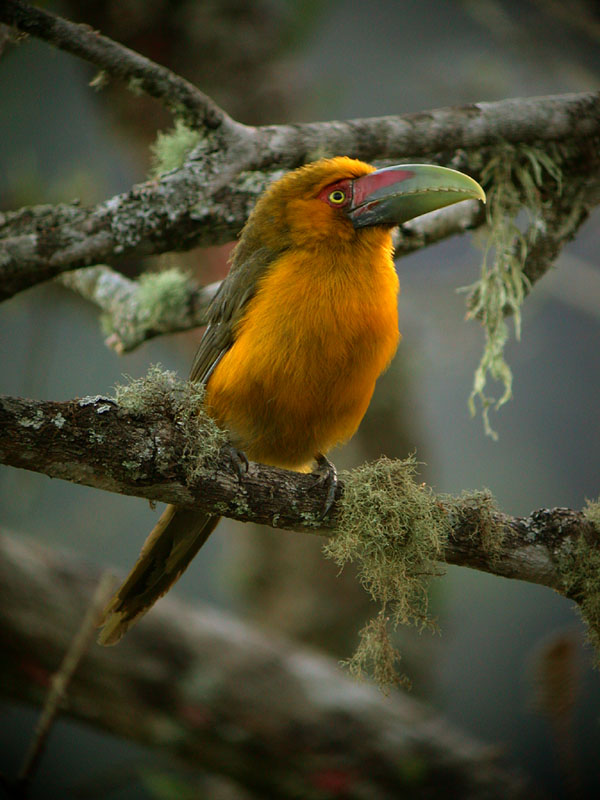
Baillonius bailloni
OTHER COMMON NAMES
French: Toucan de baillon; German: Goldtukan; Spanish:
Tucбn Amarillo.
TAXONOMY
Baillonius bailloni Vieillot, 1819. The saffron toucanet is the
sole representative of the genus Baillonius, which is the only
monotypic ramphastid genus. Peters (1934–1986) groups this
species with the genus Andigena.
PHYSICAL CHARACTERISTICS
A medium-sized toucanet, about 10 in (35 cm) long. Average
weight 5.7 oz (163 g). In the field, the only toucanet to appear
mostly yellow; bill is red and green. Eye is yellow and surrounded
by red skin.
DISTRIBUTION
This species is limited to the south Atlantic forests of eastern
Paraguay, southestern Brazil, and northeastern Argentina.
HABITAT
Not well known. This species ranges from lowland tropical
evergreen forest up to 5,100 ft (1,550 m) in lower montane
forest.
BEHAVIOR
Calls are similar to those of aracaris Pteroglossus. Described as
silent and secretive in its habits.
FEEDING ECOLOGY AND DIET
Has been seen eating figs, palmito fruits, and Cecropia fruits,
but feeding ecology not well known. Captive birds hold fruits
with feet while breaking into smaller pieces. Remsen et al. examined
stomach contents of five specimens and found only
fruit, no arthropods or small vertebrates.
REPRODUCTIVE BIOLOGY
Little is known. Courtship feeding and allopreening occur.
Nests in tree cavities; male and female sometimes drum like
woodpeckers near the nest entrance.
CONSERVATION STATUS
Near Threatened due to habitat loss, capture for the cage bird
industry, and to some degree hunting. habitat destruction is
mostly a consequence of agrarian conversion.
SIGNIFICANCE TO HUMANS
Sometimes hunted for meat.
Other popular Animals
Photo Gallery of - Saffron toucanet




 Animalia Life
Animalia Life